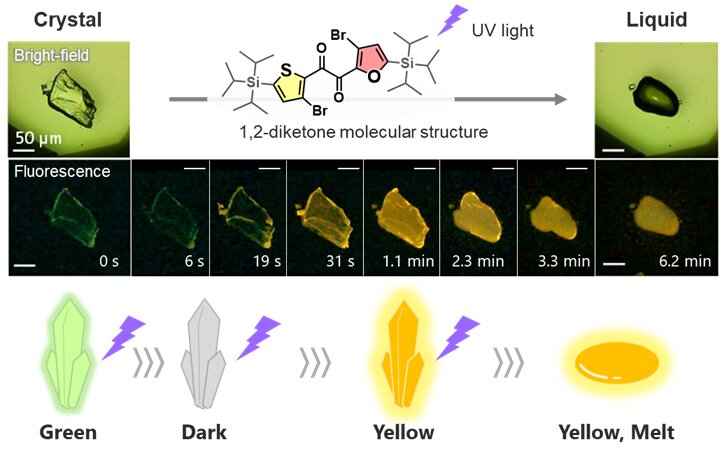Researchers from Osaka University in Japan have discovered a new class of photo-responsive crystal compounds that can melt when exposed to ultraviolet light, a phenomenon known as photo-induced crystal-to-liquid transition (PCLT). This is the first organic crystalline material found to exhibit changes in luminescent color and intensity during the melting process induced by ultraviolet light. In contrast to materials that usually melt when heated, this discovery is a significant step forward in the field of photo-responsive and reversible adhesives that can be controlled by light.
Changes in Luminescence During Irradiation-Induced Melting Process
The researchers characterized their newly discovered class of PCLT materials and found that the diketone SO, one of the members of the class, showed changes in luminescence during the irradiation-induced melting process. The luminescent evolution during crystal melting showed changes in intensity and color, from green to yellow, indicating molecular-level changes in shape during the PCLT process. The research team realized that they could further investigate these molecular-level changes underlying PCLT to better understand the crystal-melting phenomenon.
Advancing the Understanding of Crystal Melting at the Molecular Level
The researchers used single-crystal X-ray analysis, thermodynamic property analysis, and theoretical calculations to probe the mechanisms governing the behavior of this new PCLT material. They discovered that a disordered layer in the crystal is a key factor for PCLT in this class of materials. By understanding the changes in luminescence that arise from sequential processes of crystal loosening and conformational changes before melting, the researchers were able to advance the current understanding of crystal melting at the molecular level.
This discovery of a novel PCLT material and its characterization provides fundamental insights into the mechanism of crystal melting, enabling greater opportunities for designing PCLT materials with a variety of applications, including photolithography, thermal energy storage, and light-induced adhesion.


Leave a Reply